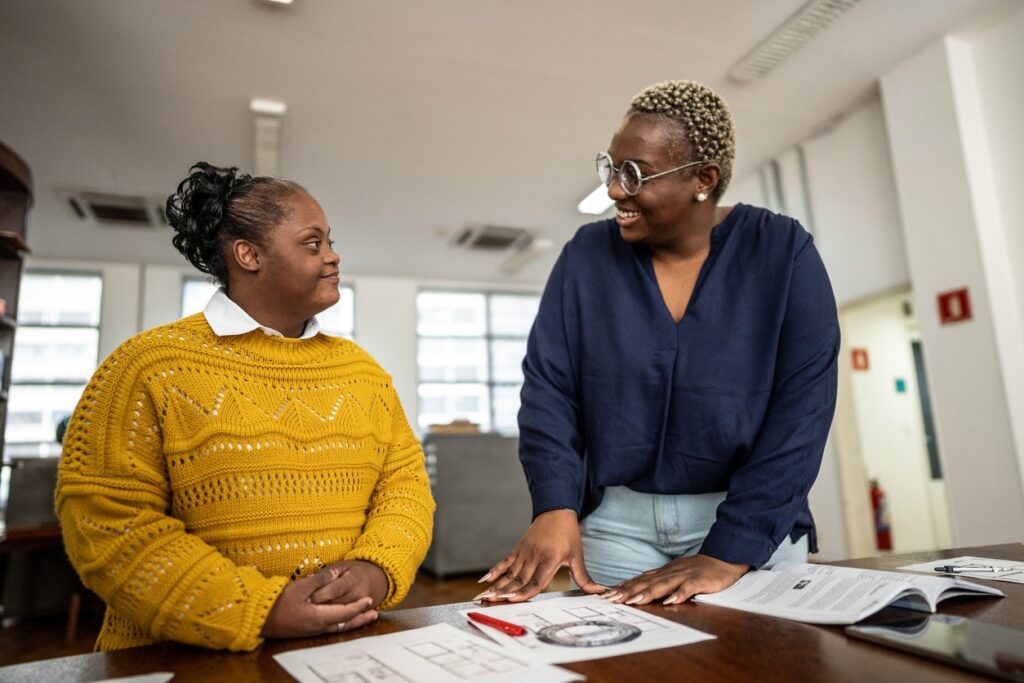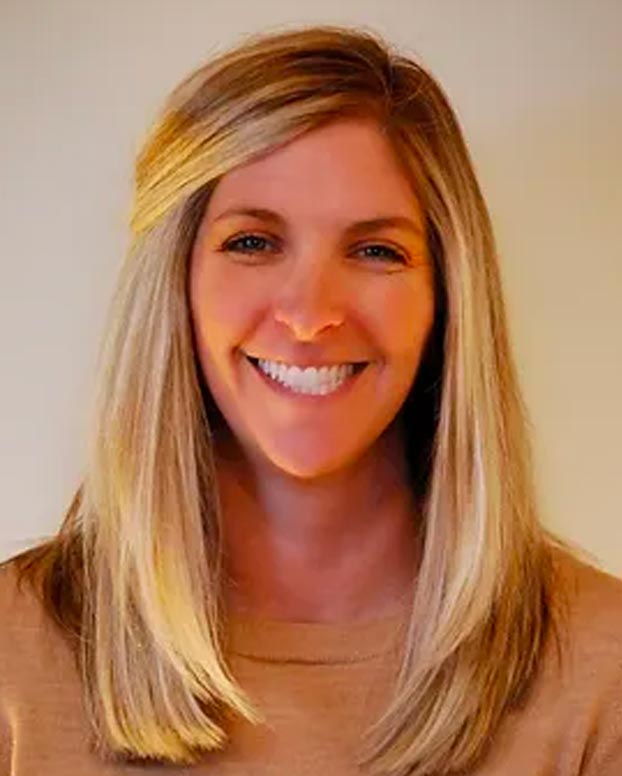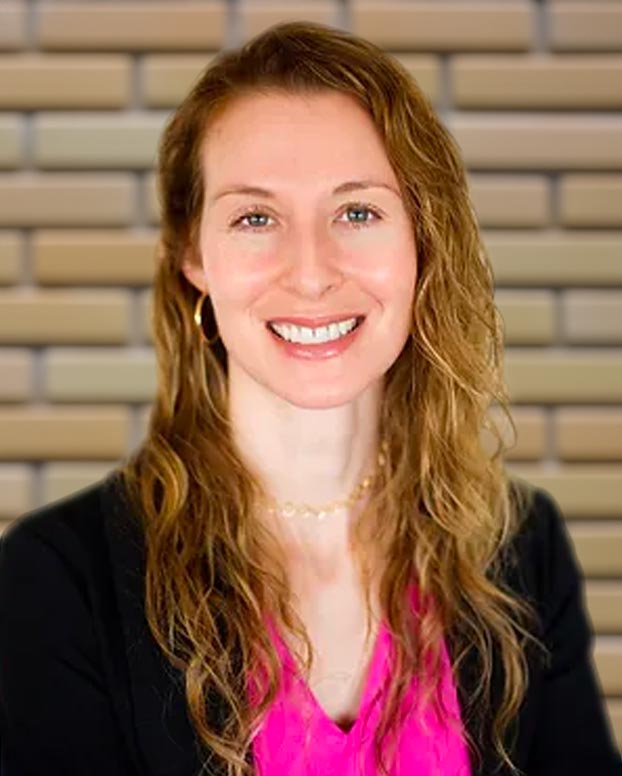Your Step-by-Step Guide to RMHS Case Management Services
October 13, 2025

A guide to understanding the RMHS Case Management Agency referral, intake, and enrollment process, helping you or your loved one move smoothly into services.
If you or your loved one needs extra support with daily living due to a disability, Rocky Mountain Human Services (RMHS) is here to help. As the Case Management Agency (CMA) for Denver and Adams Counties, we guide people through enrolling in Long-Term Services and Supports (LTSS). LTSS are programs that help children and adults with disabilities live with dignity, independence, and choice.
The enrollment process involves several steps, which can feel overwhelming at first. This guide walks you through each one in clear, simple language so you’ll know what to expect.
Editor’s note: For the sake of simplicity, we will use “you” throughout this blog, but recognize that while you may self-refer to RMHS, you might also be a caregiver, friend, etc. of the person you referred.
What Are Long-Term Services and Supports (LTSS)?
LTSS are programs that connect people with disabilities to services that help with daily life at home and in the community. These supports are available for children and adults with a wide range of needs, including intellectual and developmental disabilities (I/DD), physical disabilities, brain or spinal cord injuries, mental health challenges, and age-related impairments.
These services are provided through Medicaid waivers, which cover different supports depending on your age, needs, and disability type.
Possible examples of support include:
-
- General support with daily activities like bathing, dishwashing, laundry, shopping, cooking, or cleaning
- Support to live independently at home or in the community of choice
- Job coaching, day programs, or skill-building opportunities
- Respite care for family caregivers
- Specialized therapies or equipment
- Transportation to places other than medical appointments
Helpful resource: Visit this page to learn more about the Medicaid waivers and options available through the RMHS Case Management Agency.
At a Glance: Your Path to Case Management Support at RMHS
Getting started with case management support involves several steps. Knowing what to expect and getting an early start on the parts that happen outside of RMHS can make the process smoother and more efficient.
Briefly, here’s what you’ll need to do:
-
- Submit a referral to RMHS
- Connect with your intake case manager
- [For individuals with I/DD only] Request a DD determination
- Complete the 100.2 assessment with your intake case manager
- Submit your signed Professional Medical Information Page (PMIP)
- Apply for Medicaid through your county
- Wait for financial approval from the county
- Start services with your ongoing case manager
Important Note: Some steps, like submitting your PMIP and Medicaid application, happen outside of RMHS. Starting these right away, meaning at the same time as you submit your referral to RMHS, can help avoid delays.
Submit a Referral
Start by submitting a referral through the RMHS website. You can refer yourself, your child, or someone you know (such as a family member or neighbor).
Once you submit, you’ll see a pop-up screen with a confirmation number. Save this number—you’ll need it later.
Helpful resource: Use this guide to help.
Connect with Your Intake Case Manager
Within two business days, an RMHS intake case manager will contact you. Be sure to answer calls and emails promptly to avoid delays.
In this first call, which is called Options Counseling, you’ll discuss:
-
- Your disability or impairment
- The daily activities you need support with
- The types of services that may benefit you
Together, you’ll identify the waiver or program that best fits your needs. Before the call ends, your intake case manager will also schedule your 100.2 assessment.
Complete the 100.2 Assessment
The 100.2 assessment is a questionnaire that helps RMHS understand your daily routines and support needs. An intake case manager will meet you in person for this, usually at your residence.
-
- Usually takes about 30 minutes
- Happens in person, at your home
- Focuses on activities of daily living (ADLs) such as bathing, dressing, eating, and moving around
You’ll be asked:
-
- How long does each ADL usually take you?
For example: “It takes me 30 minutes to get dressed.”
-
- How often do you do this activity?
For example: “Once in the morning and once in the evening.”
-
- Do you need help, and if so, what kind?
For example: “Yes, I can use help with getting dressed.”
There are no right or wrong answers as the goal is simply to find out what supports will help you live safely and independently at home and in your community of choice.
At the end of this meeting, your intake case manager will check to ensure that you’ve started the next two critical steps.
Next Steps: PMIP and Medicaid Application
Both of the following steps occur outside of RMHS and are key to starting case management services. You can start these steps in conjunction with submitting your referral to RMHS, which helps expedite the intake process.
Complete the Professional Medical Information Page (PMIP)
The PMIP confirms that you require LTSS and requires the following steps:
-
- Download the form, fill it out, and have it signed and dated by a licensed medical provider.
- The following licensed medical professionals are authorized to sign the PMIP: Medical Doctor (MD), Doctor of Osteopathic Medicine (DO), Physician Assistant (PA), Nurse Practitioner (NP), Registered Nurse (RN), and Licensed Practical Nurse (LPN).
- Submit the signed form to your intake case manager within 30 days of your 100.2 assessment
- Tip: Keep extra copies for your records and future applications (e.g., Supplemental Security Income (SSI), state disability, I/DD determination)
Once your 100.2 assessment is completed and your PMIP submitted to your intake case manager, your case gets sent to your local county to wait for financial approval.
Helpful resource: Use this guide for help with completing the PMIP page.
Apply for Medicaid
To access LTSS, you must qualify for Health First Colorado (Colorado’s Medicaid program) by meeting financial criteria. Apply through your county’s Department of Human Services or online at Colorado PEAK.
Some programs require proof of disability, either through SSI or a state disability determination.
-
- If you’re applying only for Community First Choice (CFC), financial eligibility for Medicaid is sufficient and does not require a disability determination
Helpful resources:
Use this guide for help with the Medicaid financial eligibility process.
Use this guide for help with the Medicaid disability determination application.
Additional Step for People with Intellectual and Developmental Disabilities (I/DD): Request a Developmental Disability (DD) Determination
If you or your child seek services specifically for an intellectual or developmental disability (I/DD), there’s an additional required step called a developmental disability (DD) determination. This step does not apply to everyone, only to children and adults pursuing I/DD services.
Here’s how it works:
-
- Once you submit your referral to RMHS, it’s automatically assigned to our Developmental Disabilities Determination (DDD) team.
- Within 10 days, a team member will reach out and provide you with a DD determination application to sign and return.
- Once the application is signed and returned to the DDD team, the clock starts on a 90-day window for the determination. During this time, the RMHS team and your family work together to gather the required records, evaluations, and other documentation required for the DD.
- If you require additional time, you can request a one-time 90-day extension, giving you up to 180 days total.
- At the end of this period, our team will either approve the DD determination or close the request if the required documentation wasn’t provided in the allotted timeframe.
Once the DD determination is approved, you’ll be assigned to an intake case manager who will guide you through the next steps of the intake process.
Helpful resource: Use this guide for support in the process of requesting a DD determination.
Waiting for County Approval
Once your case is sent to your local county and your Medicaid application is submitted, the main step is waiting. Counties process many cases, so expect this part to take time.
-
- Counties must begin reviewing your case within 45 days and finish within 90 days, though there may be delays.
- During this time, your RMHS intake case manager can confirm your RMHS documentation was received but cannot speed up the process.
- You can call your county’s Department of Human Services (DHS) directly to check your status and ensure they have everything they need.
Start Services with Your Case Manager
Once your Medicaid eligibility is approved, RMHS will assign you to an ongoing case manager. Within one week, they’ll contact you to:
-
- Review your daily support needs
- Talk through service options (don’t worry if you’re unsure, your case manager will guide you)
Your case manager will then gather provider options and send them to you by email or mail. You can:
-
- Contact providers directly to help you choose
- Ask your case manager to finalize provider selections on your behalf
After you notify your case manager of your choices, they’ll confirm providers and start dates. At this point, you’re officially enrolled in RMHS case management services.
Please note: Sometimes system issues can cause delays, but your case manager will keep things moving as quickly as possible.
Ongoing Support from Your Case Manager
Once services begin, your case manager’s role is to ensure your supports continue to meet your needs.
-
- You’ll have quarterly in person check-ins, at locations such as your home, work, day program, a nearby coffee shop or another convenient spot
- Your case manager will ask how services are going and whether anything in your life has changed that might require adjustments
- Once a year, you’ll have an in-home review to renew your services
Through it all, RMHS case managers are here to support you, connect you with resources, and answer questions. Our goal is to make sure you and your family feel supported, informed, and empowered.
If you or someone you care about may benefit from extra support to live safely at home and in the community, we encourage you to share this blog and reach out to RMHS to learn more. You can also explore how our case managers partner with individuals and families every step of the way.






